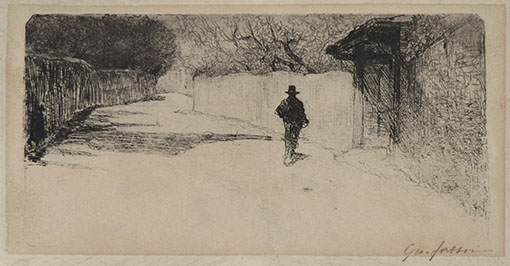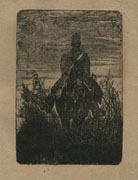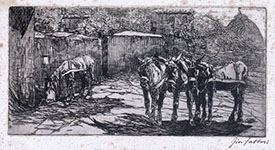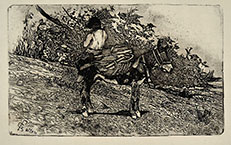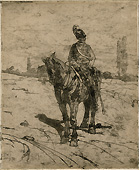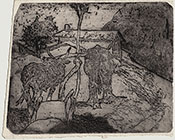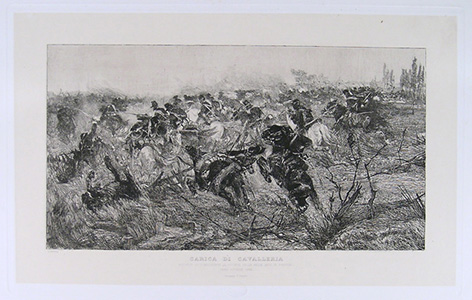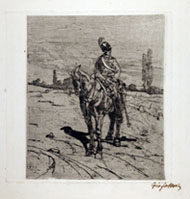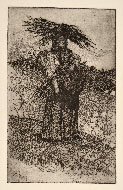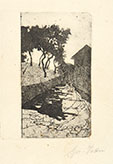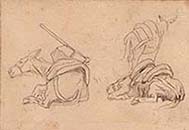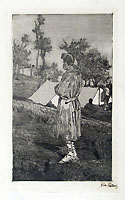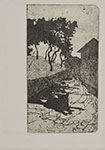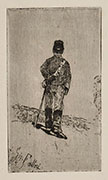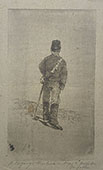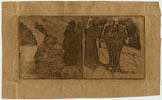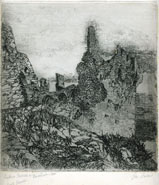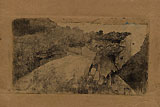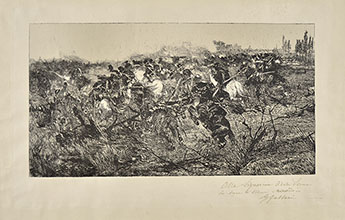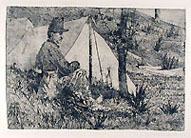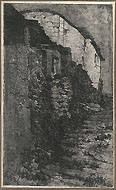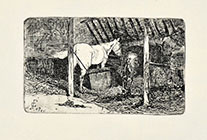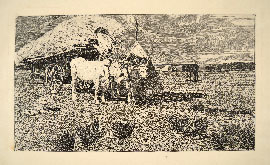(Livorno 1825 - Florence 1908)
STRADINA AL SOLE, ante 1888
Etching, ante 1888. An extremely rare print, the plate lost, only four other impressions known besides this one. Until now the one preserved at the GNAM in Rome (Inv. N. 423/16), part of the group of 21 etchings purchased from Fattori in Bologna in 1888, was considered the best impression, compared with the ones at the Biblioteca Panizzi in Reggio Emilia (Inv. 9000040029D) and at the GDSU (G.A.M. 349), from the Rosselli collection. Another specimen is in the Franconi collection, now at the Accademia Carrara, Bergamo, and this impression has been considered a second state of the etching.
Our impression, pulled with black ink, compares very well for the richness of the inking with the one at the GNAM. Furthermore, it is the only one known to be signed by Fattori, in pen, bottom right. Our print has margins, some repaired tears, is partially yellowed, and has been backed with Japanese paper. To the platemark 82 x 165 mm, the sheet measuring 110 x 192 mm.
The etching is currently on loan to the exhibition “Giovanni Fattori”, which will be held at the XNL Piacenza space from 29 March to 29 June 2025
Giovanni Fattori, possibly the most important painter of the nineteenth century in Italy, received his first instruction in drawing from a lesser painter of his native town. In 1846 Fattori moved to Florence to attend the Academy. During the 1850s Fattori joined the innovative artists, called Macchiaioli, who met at the Caffè Michelangelo in Florence and were champions of a new technique and style to contrast the conventional academic language. During those years, he still produced works that could be attributed to the historical-romantic school but his interest in studying from life also extended to landscape painting and the military life of the day became the subject of his first experiments in painting using the macchia technique. In 1867, after the death of his first wife, Fattori frequently stayed in the Maremma region which became the ideal backdrop for his works. Fattori began etching in the early 1880s, when he was nearly sixty; quite soon he was able to appreciate the difference of expression he could achieve using this new medium. A real peintre-graveur, he continued with etching his artistic research on light and essential shapes in reality.
